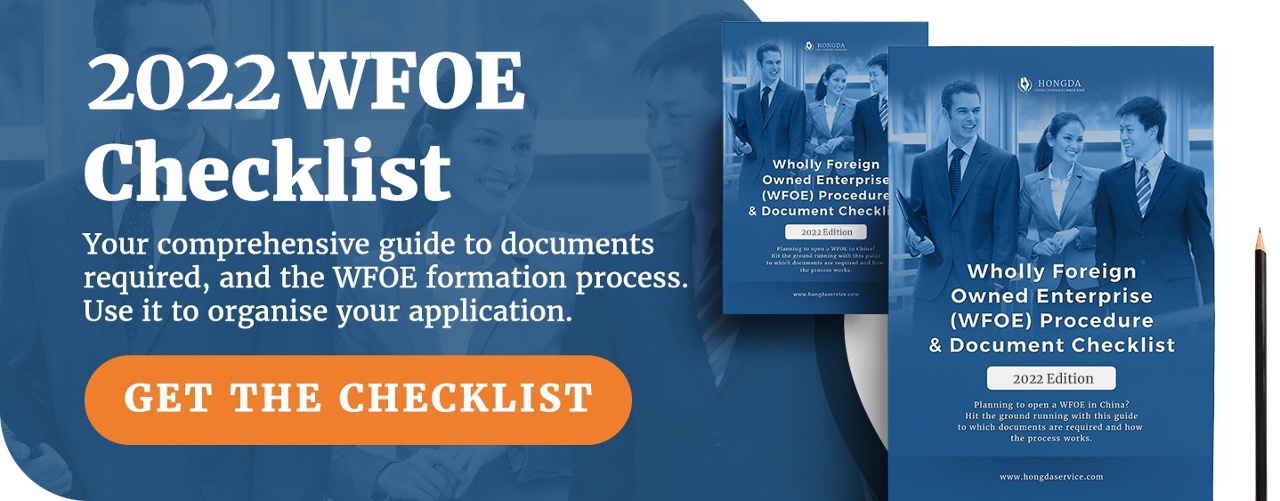In my previous blog: "4 Things You Should Know If Starting China Company Registry For A WFOE," I outlined some of the main considerations for expanding a business into China.
But how do the company types compare? Read on to explore WFOE vs Representative Office vs Joint Venture in more detail, leaving you ready to choose...
Which Company Type Do You Require For Doing Business In China?
One of the biggest considerations is the structure of the presence the company wishes to establish in China. There are three main options: Wholly Foreign Owned Enterprise, Representative Office, or Joint Venture. Each has its own merits and drawbacks with the right choice dependent on your organisation’s goals and strategy.
This blog goes deep into the three company structures and pits WFOE vs Representative Office vs Joint Venture against each other to reveal each of their Pros and Cons.
But before we start here are quick descriptions for each of them:
Wholly Foreign Owned Enterprise (also commonly known as WOFE) - A WFOE is a privately held limited liability company in China in which all the shareholders are foreign.
Representative Office (RO) - A representative office is a base from which to manage relationships, attend meetings, and is not a “legal person”.
Joint Venture (JV) - A joint venture means starting a company in China with at least one foreign and one Chinese shareholder.
Ok now that we are all caught up, let’s jump into the comparisons:
Ease of Setup

Wholly Foreign Owned Enterprise - Moderate
The process of setting up a Wholly Foreign Owned Enterprise generally takes around 40 working days. During the application process, which varies depending on the type of of this business that you require (there are 3 types: Service, Trading, and Manufacturing), you will need to specify the scope of your business. The process can be broken down into 2 parts: Pre-registration and post-registration. Pre-registration requires the submission of a number of business related documents while post-registration requires companies to formally register with a number of Chinese government agencies.
Representative Office - Easy
Of the three structures, the easiest to setup and get off the ground is an RO. Recently, amendments have been made to curb the abuse of RO’s by foreign entities. Parent companies must have been established for a minimum of 2 years and RO’s are subject to inspection and need to keep accounting records. The application process, however, remains relatively simple. Submissions of company documents and then, once the application has been approved, registering with the various Chinese government agencies.
Joint Venture - Difficult
The process of setting up a JV is complicated by the need to, firstly, find a suitable Chinese company to partner with and then, secondly, to effectively negotiate the terms of the relationship with the prospective Chinese shareholder. Choosing partners that can make tangible business contributions, safeguarding intellectual property, ensuring operational control of the joint venture, and managing talent are some of the main points that need to be agreed upon. Others issues that need to be addressed are: aligning strategic priorities, creating a structure that permits rapid responses to change, and preparing up front for eventual restructuring. All these factors add to the complexity of setting up a JV.
Protection of Intellectual Property (IP)

Wholly Foreign-Owned Enterprise - Easy
This company is completely owned by its foreign parent company. That means that the parent company controls all aspects of the business process and daily operations. This makes it easy for the company to protect its business processes, trademarks, and trade secrets.
RO - Moderate
RO’s have limited capabilities. They cannot issue invoices, receive payment, or engage in for profit activities. The result is that they still have to outsource the production of their business activities to local suppliers although they are able to monitor progress and thereby limit any IP violations.
JV - Difficult
A JV requires a foreign company to join forces with a local Chinese business. The benefits of sharing internal business networks, contacts, and processes is apparent as it reduces the time it takes for the company to establish itself. The danger, however, is that it makes the company vulnerable to theft and abuse of its intellectual property if the relationship between the shareholders deteriorates or if adequate protection isn’t built into the initial company setup.
Cost of setup

WFOE - Low
Setting up a WFOE used to require a company to invest Registered Capital. For a limited liability company with one single shareholder was required amount of registered capital accumulates to RMB 100,000. That however has changed. In 2014, the regulation regarding minimum registered capital for WFOEs were abolished in many cases to further promote it as an investment vehicle for foreign companies.
RO - Low
RO’s are relatively affordable to setup. The regulatory changes in 2010 have however made operating an RO more expensive. Additional compliance requirements means a greater financial burden on the RO or facing heavy fine for not complying as well as having their registration certificate revoked. The tax burden is also higher, going up by more than 2% from 9.5% to 11.69%.
JV - Moderate
The costs associated with setting up a JV are dependent on the type of JV setup (Equity Joint Ventures and Cooperative Joint Ventures) and how it is decided among the shareholders to capitalize the JV. Generally the absolute minimum of registered capital is RMB 30 000 for each investor in a company with multiple shareholders and RMB 100 000 for a company with one shareholder.
Deciding on how to structure an expansion into China is a critical decision. Each option has its own benefits depending on your organisational goals. An RO is best suited for companies that wish to test the waters in China. It allows you to develop relationships, create a presence, and gain more insight into how business is done in China. A WFOE on the other hand allows a company to set up a more tangible presence that allows them to trade and conduct for-profit activities and benefits from lower tax rate as well as giving them full control of the operation. A JV is a good solution for companies that have well established relationships with Chinese companies and for situations where a WFOE might not be an option due to government regulation.
Whichever structure you decide to go with, make sure you do through research and that you understand the regulatory environment regarding your specific sector or industry.
Your thoughts...
Are you currently doing business here in China? Which company type did you, or would you, open? Is a wholly owned foreign enterprise right for you?
What are some of the biggest challenges you've had to overcome?
Please feel free to let me know what you think in the comments section below!
Subscribe to our blog for weekly China business updates, tips, free resources and more...






